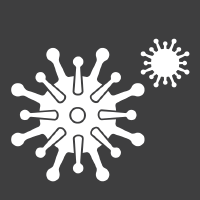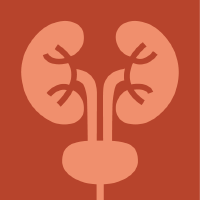Topic Editors

Clinical, Translational, and Basic Research and Novel Therapy on Functional Bladder Diseases and Lower Urinary Tract Dysfunctions
Topic Information
Dear Colleagues,
Recently, the diagnosis and treatment of functional urology have attracted great attention in urology, gynecology, and neurology. Although functional bladder diseases and lower urinary tract symptoms (LUTS) do not usually immediately affect general health, LUTS have been found to have a great impact on mental health and quality of life. Clinically, these bladder diseases and bladder outlet dysfunction result in storage and emptying symptoms. There is a wide spectrum of overlap between bladder and bladder outlet diseases—for example, patients with an overactive bladder or interstitial cystitis may have bladder storage symptoms and voiding dysfunction, and bladder hypersensitivity could result in a dysfunctional voiding. Male patients with bladder outlet obstruction may also have overactive bladder symptoms in addition to voiding difficulty. Furthermore, bladder dysfunction in patients with spinal cord injury may influence upper urinary tract health and recurrent urinary tract infection. Lower urinary tract dysfunction (LUTD) might also be an early neurological sign of central nervous system disease, such as cerebral ischemia, Parkinson’s disease, or early dementia. Conducting urodynamic and electrophysiology studies enables us to understand the etiology and physiology of LUTD. Using urine protein analysis, it is possible to diagnose different LUTDs and identify the pathophysiology of bladder or bladder outlet diseases. These clinical and research advances have brought the treatment of bladder diseases and LUTD to a new era. The diagnosis of LUTD is not only predicated on examining clinical symptoms and images but also on urodynamics, electrophysiology, and perhaps in the future, urine biomarkers analysis. The treatment of functional LUTD may include medicines, injecting agents, and surgical intervention.
This Topic welcomes articles from clinical, translational, and basic research on any bladder diseases and LUTD, such as male or female bladder outlet obstruction, interstitial cystitis, overactive bladder syndrome, detrusor underactivity, neurogenic lower urinary tract dysfunction due to spinal cord injury, or central nervous diseases. With the collection of these articles, we hope to further advance functional urology.
Prof. Dr. Hann-Chorng Kuo
Dr. Yao-Chi Chuang
Dr. Chun-Hou Liao
Topic Editors
Keywords
- urology
- bladder
- bladder diseases
- lower urinary tract symptoms
- urinary tract infection
Participating Journals
| Journal Name | Impact Factor | CiteScore | Launched Year | First Decision (median) | APC | |
|---|---|---|---|---|---|---|

Biomedicines
|
3.9 | 6.8 | 2013 | 17 Days | CHF 2600 | Submit |

Diseases
|
3.0 | 3.7 | 2013 | 22.7 Days | CHF 1800 | Submit |

Journal of Clinical Medicine
|
2.9 | 5.2 | 2012 | 17.7 Days | CHF 2600 | Submit |

Journal of Personalized Medicine
|
- | 6.0 | 2011 | 21.5 Days | CHF 2600 | Submit |

Uro
|
- | - | 2021 | 39.4 Days | CHF 1000 | Submit |

Reports
|
0.6 | - | 2018 | 21.7 Days | CHF 1400 | Submit |

Preprints.org is a multidisciplinary platform offering a preprint service designed to facilitate the early sharing of your research. It supports and empowers your research journey from the very beginning.
MDPI Topics is collaborating with Preprints.org and has established a direct connection between MDPI journals and the platform. Authors are encouraged to take advantage of this opportunity by posting their preprints at Preprints.org prior to publication:
- Share your research immediately: disseminate your ideas prior to publication and establish priority for your work.
- Safeguard your intellectual contribution: Protect your ideas with a time-stamped preprint that serves as proof of your research timeline.
- Boost visibility and impact: Increase the reach and influence of your research by making it accessible to a global audience.
- Gain early feedback: Receive valuable input and insights from peers before submitting to a journal.
- Ensure broad indexing: Web of Science (Preprint Citation Index), Google Scholar, Crossref, SHARE, PrePubMed, Scilit and Europe PMC.


